Study on wind Measurement by ultrasonic sensor in coal mine
0 Introduction
In recent years, intelligent coal mine is the core technology support for the high quality development of coal industry. It is of great significance to realize the intelligent operation of coal mine development, mining, transportation, ventilation, washing, security, operation and management, so as to ensure the stable supply of coal. Mine intelligent ventilation is an important factor for coal mine safety. The accurate measurement of wind speed in underground roadway is one of the important means to ensure coal mine safety. How to accurately measure wind speed in complex underground environment and improve the efficiency of safety production are paid more and more attention by coal mine personnel. Existing mechanical wind gauges and vortex sensors for wind speed measurement have problems such as insufficient measurement accuracy, limited measurement height and short transmission distance [3].
In recent years, the ultrasonic time difference measurement technology has gradually attracted attention in the mine. The object studied in this paper has the measuring accuracy of 0.03m/s, the resolution of 0.01m/s, and the ultrasonic penetration ability is strong, little affected by the transmission distance, and is not affected by the installation height. However, there are few researches on the error analysis of the measured data of ultrasonic sensors in recent years. The author uses the ultrasonic time difference method to measure wind while improving the hardware circuit and carrying out error compensation analysis of the measured data, so as to achieve the purpose of accurate measurement. It makes the underground wind measurement personnel grasp the wind speed and air volume more accurately, which has application value in the safety production of coal mine.
1 System Principle
1.1 Working principle of time difference method
Ultrasonic time difference method uses ultrasonic propagation in the medium, the moving speed of the medium is loaded to the speed of ultrasonic, in the same propagation distance, the forward propagation time will be less than the reverse propagation time. The ultrasonic propagation time difference is measured, and the wind speed is calculated, and the average wind speed between the transmitter and receiver is measured. There is a set of transmitting and receiving points 1 and 2, the transmission time of downwind and upwind is different t1 and t2, and the average wind speed is vs, that is, the measurement formula of ultrasonic wind speed sensor is as follows:

It is mainly composed of a display host and two ultrasonic probes. The monitored mine ventilation data adopts the linear average wind speed of a continuous section of roadway, which changes the traditional limitation of "replacing surface with point". The monitoring data accurately and reliably reflect the current ventilation volume of the mine. The schematic diagram is shown in Figure 1.
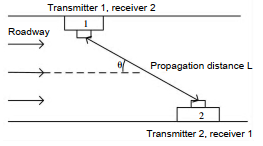
Figure 1. Principle of wind measurement by ultrasonic sensor
1.2 Improvement based on time difference method
In order to make the air flow and sensor as far as possible free from the influence of installation Angle, and better use point to substitute surface and then introduce the study of the opposite Angle to determine the roadway wind speed, the following formula is obtained:

In the process of wind speed measurement, the ultrasonic sensor is installed in two test positions in the roadway, forming a diagonal Angle. One of them transmits signals and the other receives signals. The wind speed and air volume passing through the roadway are tested every three minutes, and sent back to the ground receiving device through signal acquisition and processing. The ultrasonic sensor installation position is shown in Figure 2.
2. Design of ultrasonic sensor
2.1 Hardware Design
Ultrasonic sensor is a 32-bit microcontroller stm32 microcontroller as the main controller, which has the advantages of high speed and low power consumption. The embedded microcontroller technology is used to measure wind speed by using the principle of micro-pressure difference variation. The internal linearization and temperature compensation are realized digitally, which can ensure the measurement at low wind speed. It has the characteristics of simple structure, accurate measurement, stable performance and high reliability. It can be used with various types of coal mine safety monitoring system to continuously monitor the wind speed change in the working environment. It is combined with the peripheral circuit to complete the measurement, processing, storage, display and communication with the upper computer and other functions of flow data [4]. Ultrasonic sensor is mainly composed of transmitting circuit, receiving processing circuit, communication circuit, power circuit, OLED display circuit and other circuits, aiming at realizing the real-time measurement of wind speed and direction.
The overall framework of the system is clear. Through the transmission and transfer circuit of the wind speed sensor, the transmitting and driving circuit is used to generate the ultrasonic transducer oscillation and send out ultrasonic signals. Then the probe of ultrasonic transducer obtains the information of wind speed and air volume under the mine. The function of the receiving conditioning circuit is to carry out a series of processing such as full amplification, filtering, automatic gain control and comparison of the signal, and finally obtain the pulse signal that makes the timing circuit stop timing. The controller is integrated with a 12-bit AD converter. You can select the internal AD channel of the controller to collect signals from the wind speed sensor. Then the controller communicates with the OLED LCD screen, uploades data storage, and controls it to display real-time values of wind speed and air volume. The system frame diagram is shown in Figure 3.
2.2 Software Design
The software design of the system adopts the modular design idea, mainly including the main program, initialization program, time measurement subroutine, flow data processing subroutine, 4~20mA output subroutine, OLED display subroutine, communication serial port subroutine, etc., using C language development and design, the use of interface debugging first write each subroutine module and debugging. Then, the function to be realized is completed through joint modulation [5]. The software design flow chart is shown in Figure 4.
3 System Application
3.1 Systematic error analysis
In the mine, the wind speed and wind volume of the tunnel should be measured by the wind surveyor and the data of the sensor should be compared. The wind measurement method can be divided into head-on method and sideway method according to the different standing way of the wind surveyor. In the sideways method, the wind measurement personnel stand with their back to the roadway wall, hold the wind meter in hand, and extend their arms to the direction of vertical air flow for wind measurement. The sideways method is chosen for wind measurement this time.
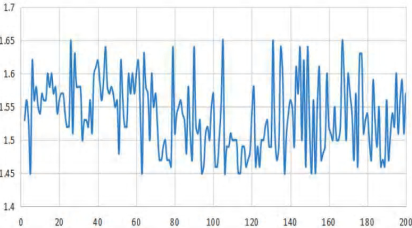
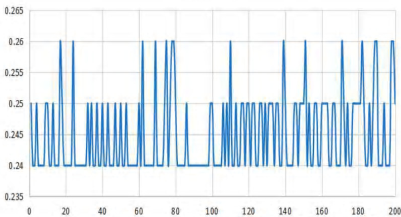
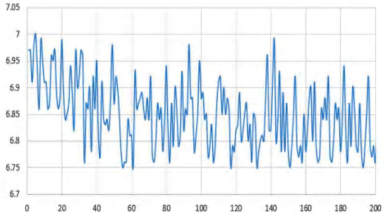
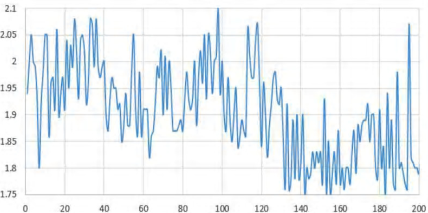
Figure 5 Real-time measurement by ultrasonic sensor
First of all, the blade wind meter is used to measure the downhole data by side method, and then the error is compared with the reading of wind speed and wind volume on the ultrasonic sensor.
It can be seen from the figure that the accuracy of the wind speed measured by the ultrasonic sensor can reach 0.01m/s, and the error between the measured wind speed and the actual measurement is less than 15%. When the measured air volume is less than 2000m3/min, the error is less than 5%; when the measured air volume is more than 2000m3/min, the error is less than 10%. It can be seen that the sensor has high detection accuracy, meets the actual demand for wind measurement, and can achieve accurate wind measurement.
When the air volume is large and the wind speed is high, the air flow field is more intense, so the measurement error is large. The measurement accuracy of the sensor will decline when used in the roadway with large air volume and high wind speed.
3.2 Real-time measurement and analysis of ultrasonic sensor
Ultrasonic sensors installed in each roadway measure the wind speed passing through the roadway every three minutes, and record it in real time through the controller and send it to the ground. This time, 200 real-time data are selected and summarized into Figure 5.
4 Conclusion
However, the measurement range of the wind speed sensor is 0.02 to 0.35m/s, and the measurement accuracy and error are within a reasonable range. It indicates that the sensor has accurate measurement accuracy and stable test performance, and can accurately detect the ventilation data in real time.
It provides guarantee for intelligent ventilation data collection in coal mine. At the same time, it can ensure the ventilation safety of coal mine and effectively reduce the occurrence of coal mine accidents.
Reference literature
[1] Ran Xia, travel green mountains. Mine ultrasonic wind velocity sensor based on time difference method [J]. Safety in Coal Mine, 2015, 46 (07) : 116-119.
[2] Liang Longbing, Liu Hui, Zhuo Ran, et al. Design of ultrasonic wind velocity sensor in underground coal mine [J]. Coal Mine Machinery, 2015, 36 (04) : 25-27.
[3] Zhou Chuanyun, Huang Qiang, Zhang Mingming, et al. Application of ultrasonic time difference method in wind velocity measurement in coal mine [J]. Safety and Environment Protection in Mining Industry, 2018, 45 (03) : 42-45, 50.
[4] Li Bingrui, Liu Na, Inoue Masahiro. Design of high precision ultrasonic anemometer for mine [J]. Industrial and Mine Automation, 2022, 48 (02) : 119-124.
[5] Zong Liming, Shi Lei. Research on field verification of railway ultrasonic wind velocity Sensor [J]. Mechanical and Electrical Components, 2019, 39 (03) : 22-26.



